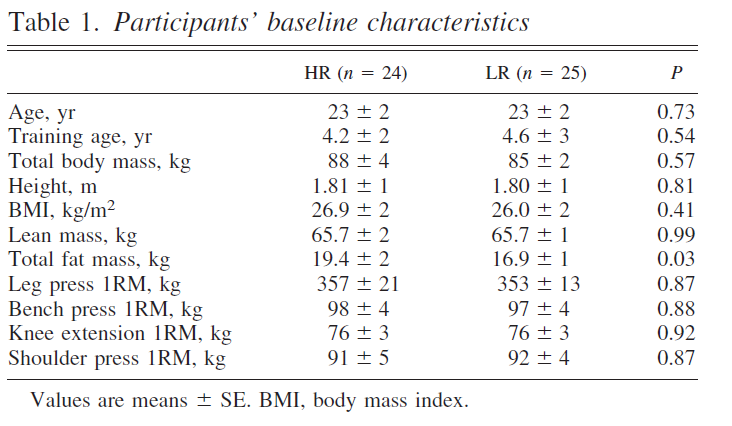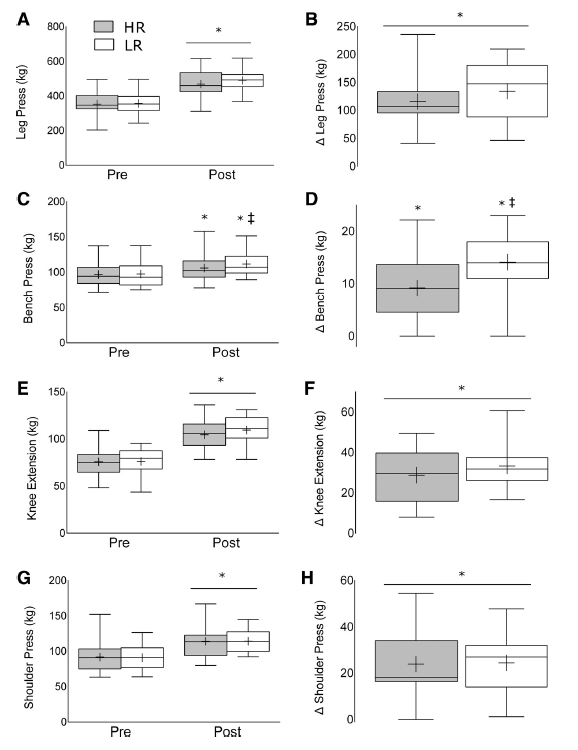A new study has just come out from McMaster University (Go Canada!) that compares the effects of low rep training versus high rep training for increasing strength and size.
The purpose of the study was to determine the effects of training “strength” versus “hypertrophy” (hypertrophy being increasing the size of a muscle). The general thought in the industry is that strength training generally occurs at lower reps and higher weights (5-12 reps) while hypertrophy is generally training for at medium rep ranges and lower weight (15-30 reps).
In this study, 49 males who all had at least 2 years experience working out (average of 4 years) were put on strict workout schedules where half performed exercises at 8-12 rep ranges and the other half performed exercises at 20-25 rep ranges. This lasted for 12 weeks and all workouts, food, strength, muscle composition and hormone levels were recorded.
 Participants performed one rep max (1RM) tests for:
Participants performed one rep max (1RM) tests for:
- Leg press
- Leg extension
- Bench press
- Machine shoulder press
These were tested at 0, 3, 6, 9 and 12 weeks into the test to determine increases in strength.
Workouts involved two different routines, each full body and 5 exercises and 3 sets. The only difference was the rep ranges used and weights were adjusted to maintain those ranges and participants had one minute of rest between sets.
Workout A: Leg Press + Seated Row (superset), Bench Press + Cable Hamstring Curl (superset) and front planks
Workout B: Machine Shoulder Press + Bicep Curls (superset), Triceps Extensions + Wide Grip Pull Down (superset) and Leg Extension
At the end of the 12 weeks both groups saw noticeable increases in both muscle size and strength. What’s interesting is that the amount of strength gain and size increase were nearly identical between the high rep and low rep groups. The only exception to this was the strength increase of bench press for the low rep group (+15%) to the high rep group (+9%).

Figure 1: Resulting increases in Cross Sectional Areas (CSA) for type 1 and 2 muscle fibers and fat and bone free mass (FBFM) differences

Figure 2: Absolute and differential strength increases for leg press, leg extension, bench press and shoulder press


Figure 3: Simplified strength and size increases for both groups
It’s important to note that both groups were performing exercises to the best of their abilities, meaning, their muscles were fully fatigued at the end of each set.
So if you’re goal is to put on size and increase your strength, ultimately an 8-12 rep range is slightly more advantageous. That being said, if you’re worried about injuries or are new to an exercise, doing sets of 20-25 reps will still be just as beneficial.
Ultimately do what works for you. Consistency is the most important factor so pick a workout routine that you enjoy and stick to it.